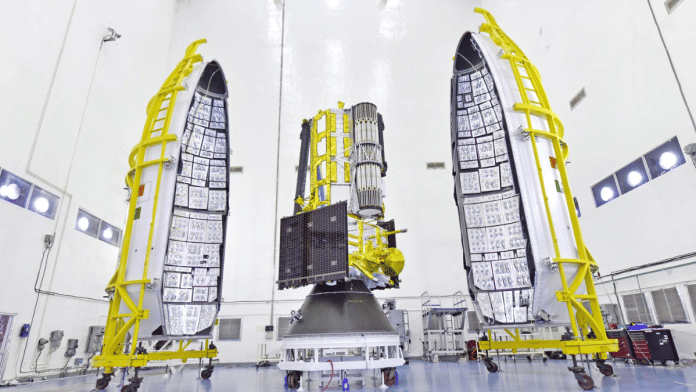New Delhi: “GSLV-F16/NISAR: Today’s the day!” the Indian Space Research Organisation (ISRO) said in a statement ahead of the launch of the unique Earth observation satellite. At 5.40 pm on Wednesday, NASA-ISRO Synthetic Aperture Radar (NISAR) will lift off onboard India’s heavyweight rocket, Geosynchronous Satellite Launch Vehicle (GSLV-F16).
A first-of-its-kind, NISAR is the most powerful SAR satellite providing high-resolution images of the Earth for scientists to better understand the processes involved in natural hazards and catastrophic events, such as earthquakes, landslides, and volcanic eruptions. This feature will be possible due to its cloud penetration abilities.
NISAR is the first satellite to be mounted with two SARs, operating in different frequency bands—L and S—making it “technological marvel”.
Costing a whopping $1.5 billion, NISAR is the most expensive Earth observation satellite in the world. Out of the total project cost, ISRO has contributed Rs 469.4 crore ($53.69 million) for the satellite and will also bear the costs of its launch.
According to NASA, the NISAR satellite will also provide crucial data on changes in ice sheets, glaciers, and sea ice and will also improve scientific understanding of how deforestation, permafrost loss and fires impact the carbon cycle.
“The data will be accessible to all users across a range of disciplines, with potential applicability in disaster response, infrastructure monitoring and agricultural decision support,” NASA said in a mission document.
Data from NISAR could change approach toward disaster preparedness and management. All data will be available within 1-2 days after observation. In the event of emergencies, the turnaround time for observations will be significantly reduced to merely a few hours.
Union Minister for Science and Technology and Space Jitendra Singh had told the Lok Sabha that over the last decade, India has presented before the world a unique model space application that is “no longer confined to just rocket launching”.
“NISAR, which is a partnership between ISRO and NASA, is going to be a gamechanger in improving our disaster responses,” he said.
(Edited by Tony Rai)
Also Read: Lift the veil, abandon Soviet-era approach. Indian science community wants ISRO to up its PR game






